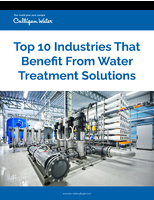Tips on Quality Solutions for Injection Molded Components
There are lots of injection molding companies, but few that take the time and effort to ensure a consistently superior finished product. It may be tempting to go with whatever molding solution is cheapest, but the cost of a molding product that doesn't have adequate quality measures in place can't be measured up front. Having to redo molds costs money and time within production, and customer loyalty after the products are released. Take a moment to evaluate some of the most effective tools and processes to ensure quality injection molded product.
PFMEA's
Product/Process Failure Mode and Effect Analysis (PFMEA) is a quality measure that can be used to measure and then impact important variables that affect product quality. By knowing which variables impact the finished products and in what ways, PFMEA's allow injection molding manufacturers to assign a level of risk to each potential point of failure, and thus prioritize on the most urgent items first.
Control Plans
If PFMEA's are used to identify a problem, control plans are the solutions to those problems. It's important that a quality control process not only be able to figure out where the problems and vulnerabilities are, but be able to accurately solve for them. If for example, the PFMEA process identified the speed at which ingredients were mixed as a critical variable to process success, a control plan would be put in ensure that ingredient mixing speed was done in a way to reduce the potential risk of product defects.
Process Validation
After identifying critical points and developing a plan to take care of them, it's crucial to any quality process to make sure those plans actually work. That's where process validation comes into place. The first step of process validation is Installation Qualification (or IQ). During IQ, equipment and supporting subsystems should be inspected for quality and accuracy. Molds should be validated for their ability to create parts that adhere to their original specifications. Once IQ is satisfactorily completed, Operational Qualification (or OQ) can commence.
As the name implies, OQ qualifies the actual operation of the process equipment by manipulating its variables. By altering the temperatures, pressures, and velocities of equipment, OQ can ascertain the highest, lowest, and nominal operating parameters that still yield a finished product. Once OQ is completed, process validation can then move to Performance Qualification (or PQ)
Performance Qualification is the final stage of process validation, and as such tests lots of real world scenarios that production could encounter. Machines should be run then cooled multiple times using actual manufacturing materials to verify that the entire process will produce quality products consistently. PQ is should be primarily focused on long term stability.
These quality solutions are vital when choosing an injection molder. The ability to put out an acceptable product is irrelevant when the product is only acceptable some of the time. By using a multidisciplinary scientific approach to quality solutions, key variables can be identified and cared for to yield a consistently superior finished product.
At Crescent Industries we utilize PFMEA, Control Plans and Process Validation, this is an upfront agreed upon requirement between Crescent and our customer and our validation processes SOP outlines the minimum requirements. For more information see our website www.crescentind.com/crescent_industries_quality.html or call Toll Free: 1-800-411-3844.




